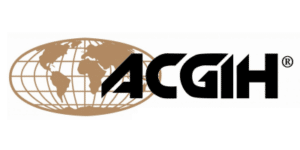Wildfire Assessments
Omega Environmental Services, Inc. is a full-service environmental management and hazardous materials consulting firm. Omega’s staff is experienced in conducting comprehensive investigations of wildfire burn areas to determine the presence of combustion by-products that may potentially have impacts on human health.
Our wildfire damage assessment methodology was developed by Richard Wade, PhD., Principal Scientist and Toxicologist at Omega. Dr. Wade has provided technical consultation, risk management, and mitigation strategies for some of the world’s most challenging contamination scenarios, including major wildfires, oil spills, hazardous material rail car derailments, and the aftermath of explosions. He has also provided investigation and mitigation strategies following food and water contamination events.
The purpose of a burn area assessment is to determine whether wildfire residues left behind in burned or damaged structures are above background levels and pose a health risk to cleanup workers, current tenants, or future building occupants.
Components of a Wildfire Assessment Strategy
First, a thorough visual assessment and photo documentation of the burn area site conditions are conducted, which may include both exteriors and interiors of commercial and/or residential structures. Next, a comprehensive wildfire residue analysis is conducted, which involves surface wipe, micro vacuum, and air sampling for the common combustion by-products soot, char, and ash, along with organic compounds, metals, asbestos, and aerosolized particulate matter.
Soot, char, and ash are distinct materials that result from various burn processes and are produced by the combustion of different materials. While soot and char typically have a neutral pH, ash can have a pH of 9-13, which may create a corrosive environment and cause damage to some materials.
The assessment may also include sampling for metals, volatile organic compounds (VOC) and semi-volatile organic compounds (SVOCs). As certain VOCs are ubiquitous in the environment, a wildfire assessment sampling strategy will investigate specific chemicals that are characteristic of wildfire combustion of plant-derived fuels.
Metal analysis may be performed if property such as vehicles or structures were burned during the fire. Combustion of these materials may lead to lead and mercury contamination in nearby soil or water. Certain metals naturally occur in some environments. If structures were burned or damaged during the fire, asbestos sampling may be warranted. Additionally, ambient radiation in the burn area may be evaluated.
Sampling for post-fire assessments can be complex and is dependent on the concern being addressed. Surface, material, soil, and water contamination present different sampling requirements than indoor smoke odor. Once the laboratory analytical results are received, our in-house expert, Dr. Wade, will carefully analyze the results to determine the presence of chemical indicators, and whether they pose a health risk. These results must be closely scrutinized to ensure that any property damage observed is in fact related to the fire and not attributable to other pre-existing causes or conditions. Analytical results will be compared to background concentrations of constituents if known. Indoor sample results will be compared to outdoor results to help draw conclusions. Based on these results, our team of experts will present an overview on the type and extent of damage incurred as the result of the wildfire and provide recommendations in a detailed report.
Contact our experts to learn more about the benefits of a post-wildfire assessment






